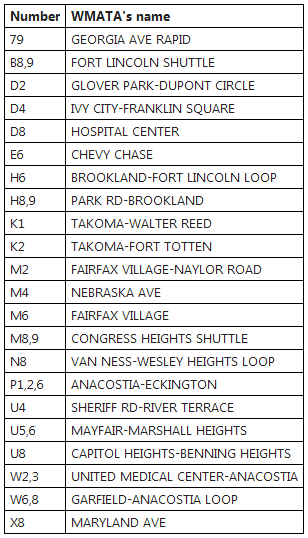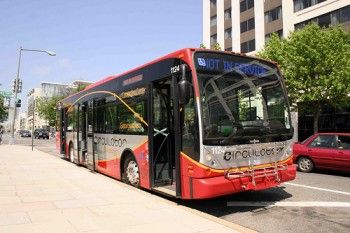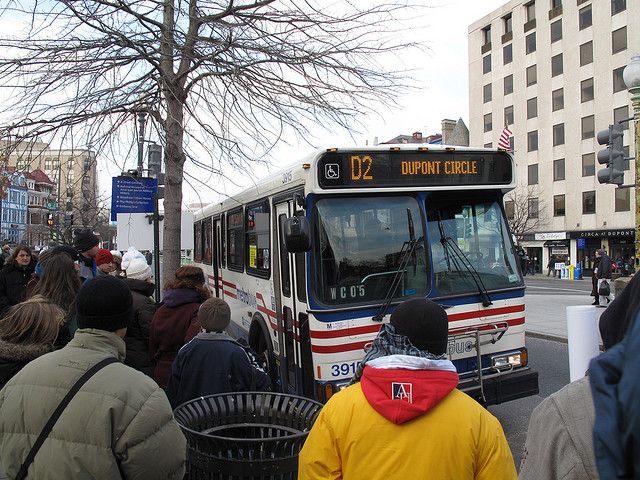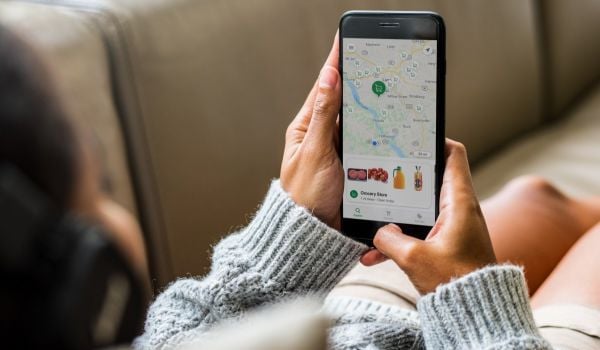Should a private company finance, build and operate a streetcar? Should it also take over neighborhood bus routes from a regional transit authority?
Yesterday, Washington, D.C.’s District Department of Transportation (DDOT) put out a broad request to transportation companies asking them to weigh in on the possibilities.
The Request for Information (RFI) focused on the streetcar, where DDOT asked for general plans to privately design, build and finance D.C.‘s complete streetcar system in five to seven years, then operate and maintain it for 30 years. DDOT hopes this might save money, get around D.C.‘s debt cap and possibly greatly speed up the process.
The RFI also contains an idea which has been kicking around for years: Taking over “non-regional” Metrobus routes from the Washington Metropolitan Area Transit Authority (WMATA) and having the streetcar operator also run those along with the local Circulator buses. This would, in essence, create a fairly large local bus system like others in the region.
What Is a “Non-Regional” Route?
WMATA operates are two types of bus routes: Regional and non-regional. Regional routes cross jurisdictional boundaries or run on major commuting corridors. For those routes, the jurisdictions share operating costs according to a formula.
Non-regional routes serve more of a neighborhood function, and the jurisdiction containing them pays the whole cost. There’s a set list of non-regional routes, which isn’t always intuitive because as routes have changed over time, their status as regional or non-regional has not necessarily changed.
WMATA was originally founded just to build and operate Metrorail, but took over failing local bus companies in 1973. More recently, many jurisdictions created their own bus systems and started taking non-regional routes away from WMATA.
Montgomery County’s Ride-On, Arlington’s ART, Alexandria’s DASH and Fairfax County’s Connector all absorbed the vast majority of the non-regional routes. Only D.C. and Prince George’s County’s have substantial numbers of non-regional Metrobus routes; Prince George’s also has its TheBus, and D.C. has the Circulator, but WMATA still also runs many non-regional routes in both jurisdictions.
The District already contracts out operations for the Circulator, as do some if not all of the other regional bus systems. This trial balloon would add other Metrobus routes to the same or a similar arrangement.
In D.C., the non-regional routes are:

Should D.C. contract them out instead of paying WMATA?
At various times in the past, people have asked if D.C. should also take over its non-regional routes. DDOT might be able to save money; the amount the District pays WMATA per hour for non-regional bus service is more than it pays First Transit to run the Circulator, former DDOT transit head Scott Kubly said when he was working for DDOT.
In 2010, D.C. paid $102.41 per hour for non-regional service, according to Michael Perkins, and that number will be higher now; eyeballing the D.C. Circulator dashboard’s data for total cost and revenue hours, the cost per hour looks to come out to about $85 per hour.
D.C. paid a total of $31.77 million in the latest fiscal year for this non-regional bus service; if they can get this kind of savings, they might save $5 million, which is considerable.
However, some doubt DDOT would save quite so much. Circulator is a newer service than Metrobus, and just as newer airlines have lower costs because their pilots and flight attendants are younger, Circulator drivers are younger. People from the transit union have noted in the past that mature suburban bus systems like Ride On have higher costs as well.
Contrary to what some assume, Circulator drivers do belong to a union. Kubly also pointed out, during a conversation while he was at DDOT, that federal rules also limit a city’s ability to take a transit service it’s already paying a unionized workforce to operate, and simply bidding it out to operators who might not be unionized or might pay substantially less.
What Would Happen to Circulator?

The Circulator. Credit: Elvert Barnes on Flickr
It would probably spell trouble for the Circulator brand if DC simply made all of these 30 routes into Circulator routes. These routes don’t run on the 10-minute headways standard for a Circulator. Some of the non-regional routes are among WMATA’s poorest-performing in terms of cost recovery; D.C. has kept them running because many residents depend on them.
The most recent Circulator 10-year plan suggests a standard for Circulator service: Routes that connect activity centers, usually with limited stops and frequent service. Neighborhood Metrobus routes are the opposite; they connect some homes to an activity center, typically with a great many stops.
D.C. could create two brands, one for limited-stop, center-connecting, 10-minute bus service, and another for other service. Maybe some of these routes could one day, if not now, move up to Circulator standard and become Circulators.
Would It Confuse Riders?
Already, it’s somewhat confusing to have some Circulator buses and some Metrobuses in the same area. The Circulator map doesn’t show Metrobuses, and the Metrobus map makes Metrobuses more prominent than Circulators. To riders, though, they’re all buses, mostly.
If more WMATA-run regional and District-run non-regional routes ran along the same road, would people understand the choices as easily? Would someone let one type of bus go by to take another when both go to the same place? Would everyone have to consult even more maps than they do now?
For example, the D2 shares some of its route with the D1, D3 and D6. But those are regional. If the D2 stopped being a Metrobus, would it even show up on the same maps?
And what about mobile apps? Today, you have to look at different apps to find real-time arrival info for Circulator and Metrobus. Will apps integrate these and the new D.C. buses, or will riders have to look even more places?
DDOT is probably interested in hearing what the industry has to say before it makes any decisions. That’s why the RFI is very open-ended, and why it’s an RFI instead of an RFP (Request for Proposals). DDOT is not bidding out a contract now; it’s asking industry players what they might be interested in bidding on.
Maybe local buses will be a part of that, or maybe not. But if so, that’ll be a significant change, for better or worse.





_600_350_80_s_c1.jpg)










